A new book is set to reveal some of the intriguing details and stories which have emerged from the Churchill War Rooms, the bunkers hidden below Whitehall where the British prime minister directed World War Two.
Secrets Of Churchill’s War Rooms takes the public behind the glass of the cabinet war rooms, now run as a visitor attraction by the Imperial War Museum (IWM).
The Huffington Post UK spoke to its author, historian Jonathan Asbury, about some of the bizarre items and fascinating stories from the bunker.

After the end of the war, the rooms were locked up and left untouched save for a few by-appointment tours. But as the decades wore on, more and more requests for tours were being received by the government.
The rooms were eventually opened to the public by the IWM in 1984 and can still be visited today.
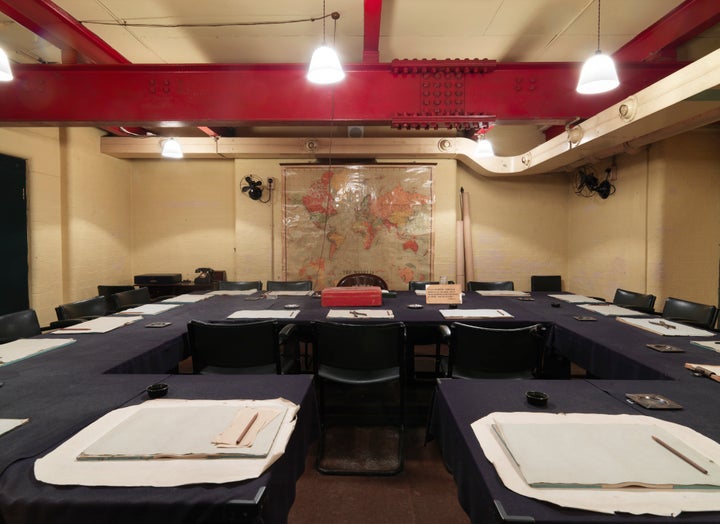
These historic rooms, which were so key to the country’s successes in the war, have been carefully preserved and this, understandably, means that in many places, access is limited by ropes or panes of glass.
Asbury’s book, however, gives readers the chance to examine objects in the rooms up close - and reveals some of the fascinating stories behind them.
1. Tiny marks on Winston Churchill’s chair reveal his anxiety

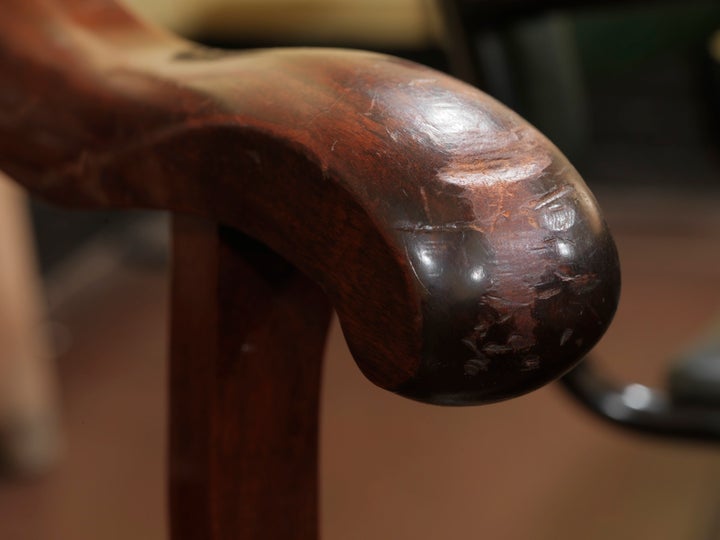
Asbury explained: “Most of the people in the room had a metal-framed chair but Churchill had a wooden one and that is still there. On the ends of both of the arms of the chair are some very deep scratches.
“Because of all the nervous tension in the room, Churchill would basically scratch the arms of the chairs. On one side there’s a scratch which is particularly deep and I think it was made by his ring.”
2. Churchill had a deep-seated hatred of staplers
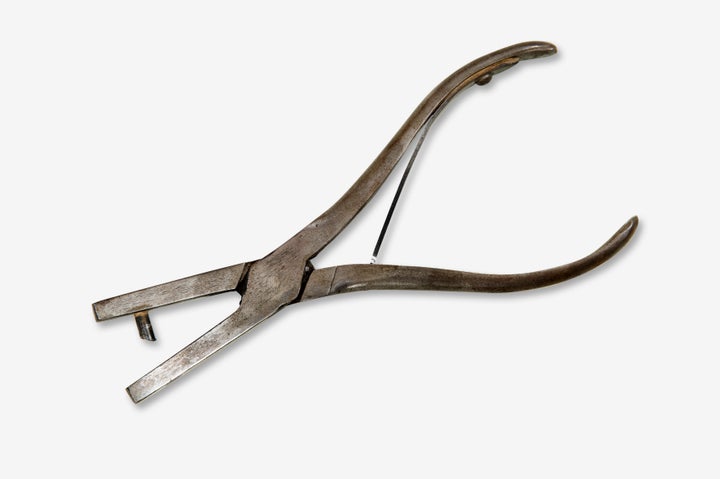
The prime minister insisted that all documents were punched and tagged together, rather than stapled.
Asbury explained: “One of his pet hates was that he hated staples. He had an object which he called a ‘klop’, which was a hole punch. He insisted that everyone would use one and there would be absolutely no staples used.
“There was a great story about someone who did by accident staple something and then had an outraged call come through from Churchill asking who had done that because he had just cut his finger on it.”
3. Workers at the war rooms had their own way of dealing with the lack of sunlight
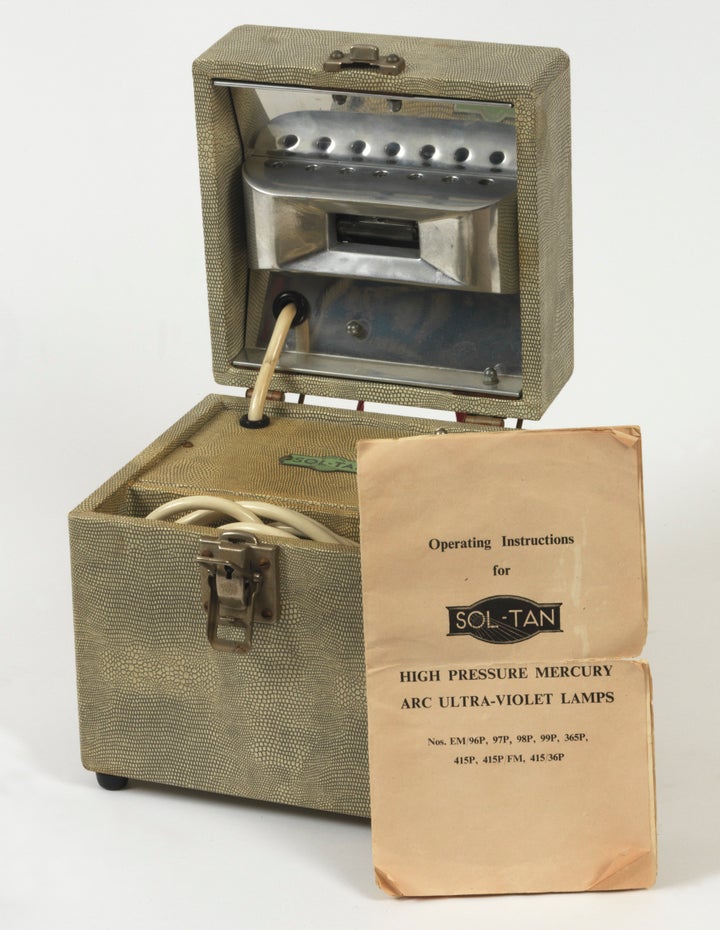
Running the war was a serious business and there was often little time to go outside to stretch one’s legs. Workers sometimes stayed underground for days at a time, kipping down in the dormitories.
This meant that staff were in danger of suffering from a lack of sunlight, causing a vitamin D deficiency and related health problems.
One solution used by the bunker’s inhabitants was to use this portable sun lamp.
Individuals would strip to their underwear, put on protective goggles and stand in front of the lamp to get a dose of UV rays to try to stave off health problems.
4. Tight sugar rations led to jealous guarding
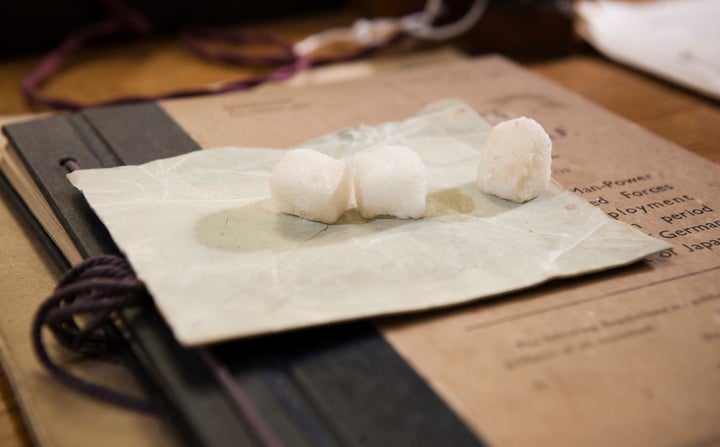
These cubes of sugar were found hidden at the back of a drawer belonging to Wing Commander John Heagerty, where they had lain untouched for decades until the IWM undertook an inventory in the 1980s.
From the shape of the cubes, it looks Heagerty had his own rationing system, shaving off tiny portions of sugar when he needed them.
5. The bunker actually wasn’t nearly as safe as people assumed it was
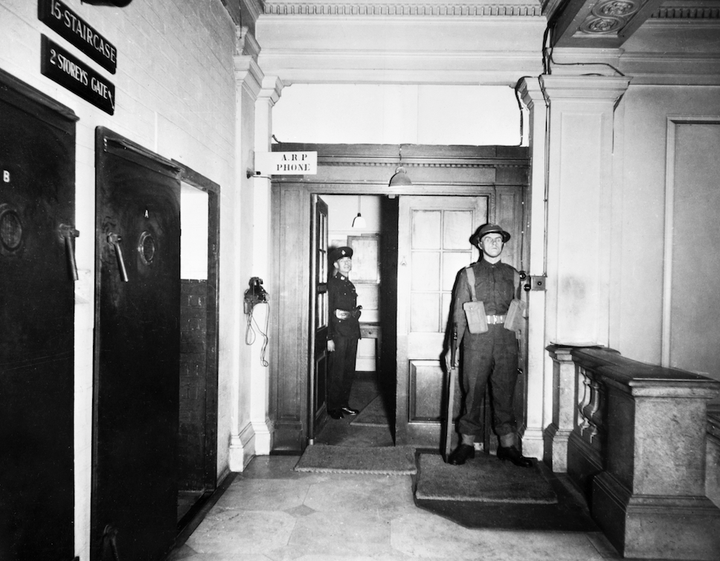
Asbury explained: “Everyone felt as if they were a long way below ground because to get into the building from the road you have to climb up some stairs, walk into the ground floor of the building, and when you then go down the stairs to the basement, you feel like you’re going down quite a long way. Actually you’re not.
“A lot of people said they thought they were around 50 feet underground and they were probably only about 10 feet below ground.
“Everyone assumed that the whole point of the war rooms was that you’d be safe if a bomb hit but actually this just wasn’t true.
“Churchill was one of those people who assumed this was true and when he found out shortly after he became prime minister he was absolutely appalled and ordered a for a huge layer of concrete to be injected between the ground floor and the basement to make it stronger.
“He didn’t just order for it to be done either, apparently he would quite regularly grab a torch and go and inspect the building work and jump around between girders to check that everything was being done right. He would get wet concrete all over his shoes. He was a very hands-on kind of leader.”
6. Churchill had an ingenious way of summoning his staff to his room
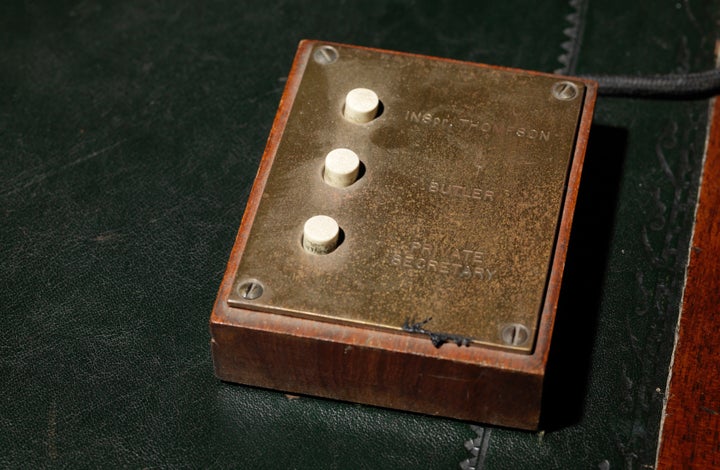
Asbury said: “One thing you can’t see at all from the standard tour of the war rooms is that on the desk, there is a set of buttons for Churchill’s bodyguard, butler and private secretary. He was able to simply ring for anyone to come to his room.
“The roles of different people are etched next to the buttons, which is a nice touch you can’t see on the tour.”
7. Churchill actually very rarely slept overnight in the bunker
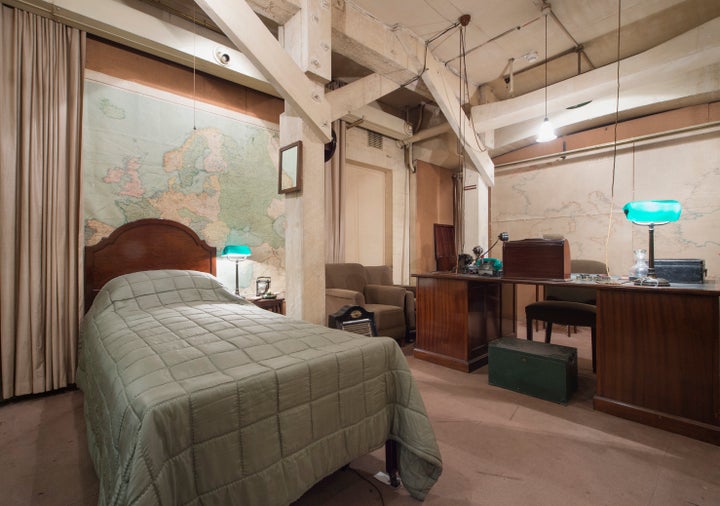
Perhaps it was being underground or perhaps it was his small standard Civil Service issues bed, but Churchill rarely slept at the war rooms.
Asbury explained: “He only stayed overnight there only three or four times over the whole war, despite having a bedroom down there, because he hated it. He loved the war rooms, he showed them off to visiting generals and that sort of thing, and particularly loved the map room and could often be found down there watching everything that was going on.
“But he hated sleeping down there, particularly when there were bombing raids on.
“If anything, he’d rather climb up onto the roof and actually watch the raids. It’s not a myth, if he could he would grab a helmet and climb up there.
“There’s a great story in which he promised his wife he would go to bed down in the war rooms - she made him promise. So he went down with his bodyguard and got himself sorted out and into bed and asked the bodyguard to turn the light off. The bodyguard did so and went off to his room and then the bell immediately rang for him to go back to Churchill’s room. He there found him getting out of bed again and Churchill said ‘well okay, I went to bed just as I promised’. He really wouldn’t do it.”
8. There’s some graffiti you won’t be able to spot from behind the glass
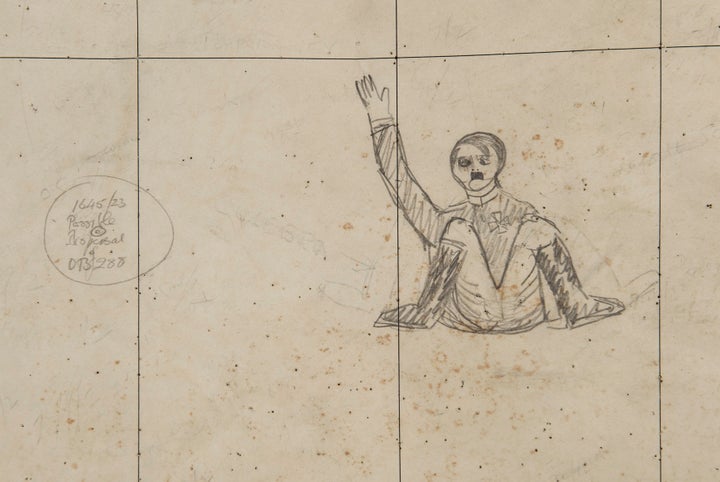
Even eagle-eyed visitors may not have spotted this.
If you trace a line due west from the north-west tip of Scotland on one of the charts on the wall in the map room, you’ll reach a small pencil-drawn picture of Adolf Hitler sprawled on the ground and giving a cross-eyed salute.
This little piece of graffiti is something of a mystery, as it is not known when it was added or who by.
9. Churchill and US President Franklin D. Roosevelt had nicknames for each other
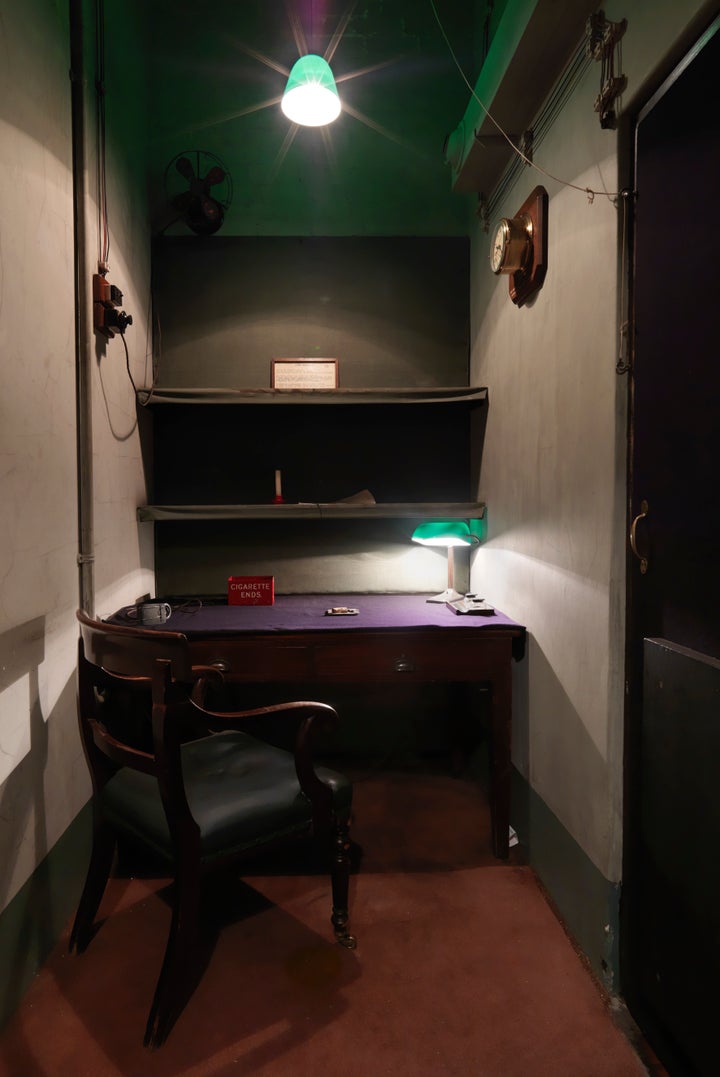
A letter from former signals officer Raymond A. Edgehill revealed the close personal relationship between the British and US leaders.
Asbury said: “It was his job to set up the calls when they needed to happen. His wife wrote on his behalf to explain he had remembered being asked to set up a call in May 1944 and sitting with Churchill beforehand and Churchill offered him a brandy, although he was a good soldier and said no.
“He was allowed to sit in on the first couple of minutes of the call and he heard Churchill call Roosevelt ‘Old Pal’ and Roosevelt called him ‘Winnie’.
“It’s brilliant because you don’t always think of that sort of personal relationship that they had, and this was a week or two before D-Day. So despite all the tension building up, stye were still able to talk to each other those sort of terms, which is lovely.”
Secrets of Churchill’s War Rooms is published on 31 October 2016.
